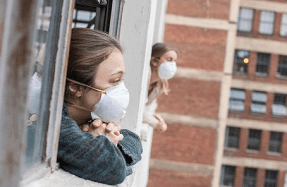Curators vs. Meddlers

The arcane world of museum staffing recently made news when the Brooklyn Museum announced the hiring of Kristen Windmuller-Luna, who is white, as its curator of African art. Without disputing her impeccable credentials, outraged activists—most of whom know little about either the art in question or the curatorial profession—have demanded that the museum diversify its senior staff.
While the Brooklyn brouhaha has caught the most attention, it’s been an active season for high-level museum leadership in New York. The biggest news is the appointment of Carrie Barrett Rebora to succeed Gregory Long as president of the much-loved New York Botanical Garden. She’s a great choice. A longtime curator and administrator at the Metropolitan Museum of Art, Rebora brings energy, experience, respect for research, and fundraising ability—the last of which is urgently needed, since, like many of New York’s blue-chip nonprofits, the Botanical Garden relies on an aging donor base.
Brett Littman, the outstanding former director of the Drawings Center in Manhattan, is the new director of the Noguchi Museum in Queens, an unheralded New York treasure, as sublime as its namesake’s sculpture. The museum’s retiring director, Jenny Dixon, managed one of the nonprofit world’s most delicate challenges: transitioning from a private foundation to a public museum. Littman, both curious and intellectual, will further develop the Noguchi’s exhibition and acquisitions program.
The Queens Museum has been freed from the left-wing agenda of Laura Raicovich, for whom political activism and advocacy were a top priority. She hijacked the institution to advance her views on illegal aliens, trying to turn it into a “sanctuary museum” and even dispensing legal advice. The museum’s board was right to be unhappy with her. Moral of the story: if you want to be “woke,” do it on your own time.
When the respected 31-year veteran Philippe de Montebello retired from The Met in 2008, the trustees hired young Met textiles curator Thomas Campbell to replace him. The board then pushed a $600 million building program aimed at contemporary art. It spent too much on shows, marketing, and technology. When the building plan flopped and the museum’s finances tanked, Campbell got the blame, though the trustees were the real culprits. Campbell left the Met—or was forced out—last June, to take a research fellowship at the Getty in Los Angeles. The search for a new director thus began on a sour note.
The director’s role has changed. For years, the Met’s president managed fundraising, marketing, the building, security, and other operational matters, while the director handled the art program and acted as the museum’s public face. The president reported to the director. In the recent interregnum, the board has changed the rules. Now, the museum’s new director will report to the president; he or she will be a glorified chief curator with no real power over spending and messaging. The Met’s current president, art historian Daniel Weiss, is also serving as the museum’s acting director. The question is whether the board will hire him as the permanent director and reunite the two positions. In joining the Met’s power elite, Weiss, a college president and professor until 2015, was a rare outsider to its rarefied world.
Whitney Donhauser has finished her first year as the director of the Museum of the City of New York. She worked at the Met for 24 years, almost her entire career, mostly in fundraising. Directors should come from the ranks of curators, though art-savvy Donhauser has improved the tenor and sharpness of the museum’s shows. Sean Corcoran’s Todd Webb retrospective was very good. Phyllis Magidson, the respected head of the museum’s great historic costume collection, is getting time and space to shine. This is all good news.
All major museums will have to deal with a new challenge: the city’s meddling in their hiring practices. Last year, Mayor de Blasio announced the city’s first “cultural plan,” which will eventually link city funding for museums to the racial and gender composition of their staffs and boards. It will impose quotas aimed at raising the percentage of people of color in senior positions, including curators, to a figure acceptable to diversity bean-counters. De Blasio added the quota plan to his budget at the last minute. He almost never visits museums and seems uninterested in culture generally.
Quotas for museum hiring are a terrible idea, of course. The number of trained minority candidates for curatorial positions is tiny. Graduate school programs produce only a handful of freshly minted doctoral or master’s degrees among targeted groups. Without an expanding supply of qualified candidates, employers will likely lower standards. That won’t serve anyone—museum employers or patrons—very well.






